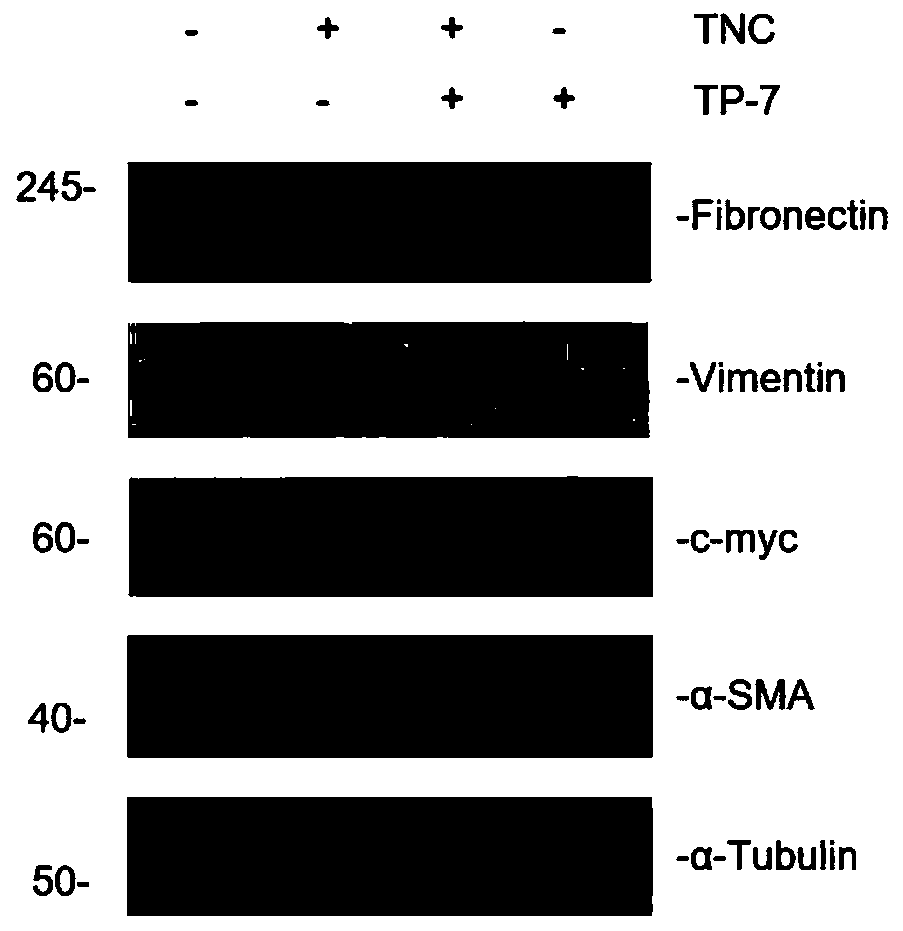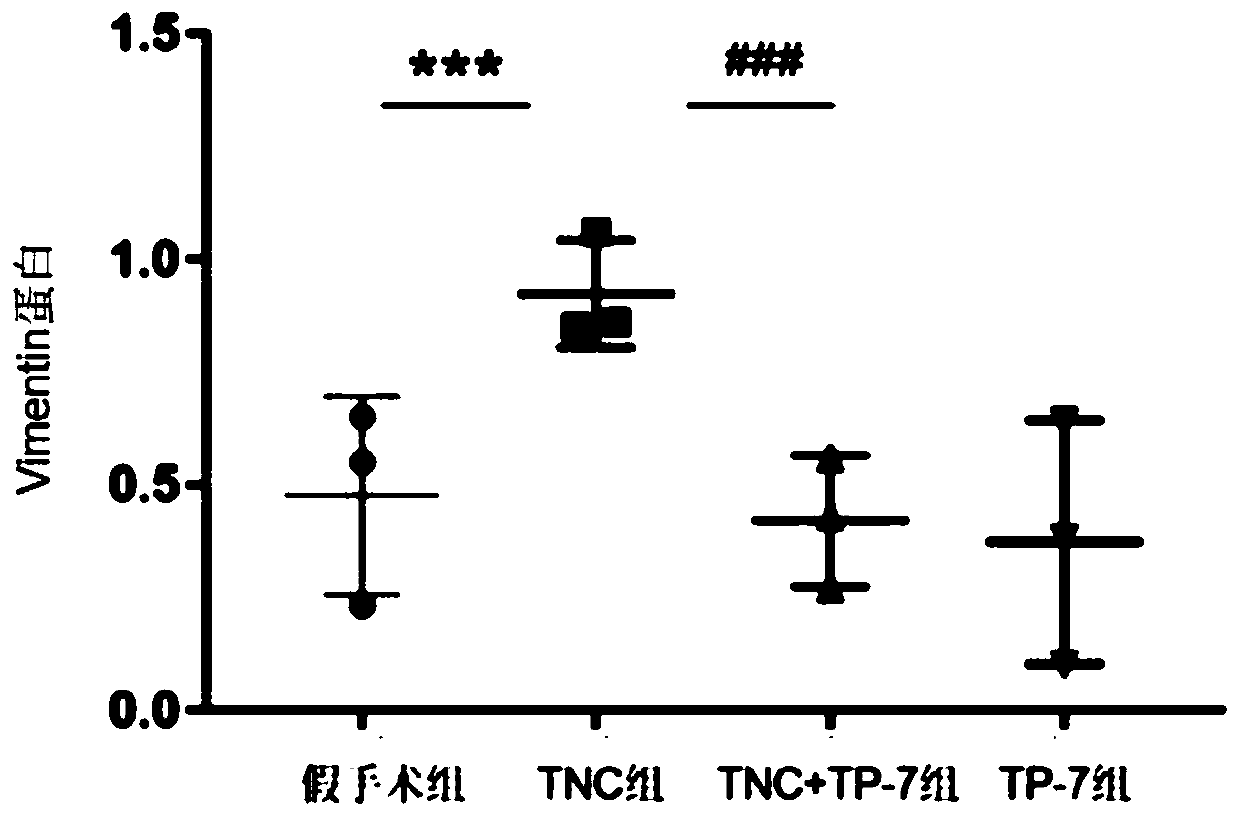Use of small molecule polypeptide TP-7 in preparation of medicines for treating chronic kidney diseases
A technology for chronic kidney disease and small molecule peptides, which is applied in the direction of drug combinations, medical preparations containing active ingredients, and pharmaceutical formulas, and can solve the problems of no prevention and treatment drugs and intervention methods, high cost, and heavy economic burden
- Summary
- Abstract
- Description
- Claims
- Application Information
AI Technical Summary
Problems solved by technology
Method used
Image
Examples
Embodiment 1
[0019] Example 1: The source of the small molecule polypeptide TP-7
[0020] According to the partial amino acid composition of the FNⅢ4 domain of tendin C (TNC), a small molecular polypeptide composed of 30 amino acids was artificially synthesized by Hangzhou Dangang Biotechnology Co., Ltd., named TP-7.
[0021] The amino acid sequence of the small molecule polypeptide is as follows:
[0022] SEQ ID NO. 1: EWRNGKAAIDSYRIKYAPISGGDHAEVDVP.
[0023] After sequencing verification, the small molecule polypeptide TP-7 synthesized in this example was used in the experiments of the following examples.
Embodiment 2
[0024] Example 2: TP-7 inhibits the activation and proliferation of fibroblasts caused by tenascin C (TNC) in vitro
[0025] 1. Experimental materials
[0026] Cells: Rat kidney fibroblasts (NRK-49F).
[0027] Medium: DMEM / F12 (1:1) medium containing 10% FBS.
[0028] Culture conditions: 37°C with 5% CO 2 incubator.
[0029] 2. Experimental Treatment
[0030] Rat kidney fibroblasts (NRK-49F) were treated with 1.5×10 6 Sow in a 6cm culture dish, culture for 1 day, culture in serum-free DMEM / F12 (1:1) medium for 12 hours, add tenascin C recombinant protein (50ng / ml) to stimulate the cells, and add small molecule polypeptide TP-7 at the same time (50ng / ml) co-incubated for 48 hours to collect the protein for Western blot experiment.
[0031] 3. Experimental results
[0032] Experimental results such as Figure 1A to Figure 1E As shown, the TP-7 small molecule polypeptide can effectively inhibit the activation and proliferation of fibroblasts caused by tenascin C (TNC).
Embodiment 3
[0033] Example 3: The renoprotective effect of the small molecule polypeptide TP-7 on the mouse kidney unilateral ischemia / reperfusion model
[0034] 1. Experimental animals
[0035] BABL / c mice, male, 8 weeks old, weighing 20-22g, SPF grade.
[0036] First weigh the animals, put earrings numbered, select 18 healthy mice with a weight of 20-22g, and randomly divide them into 3 groups with 6 mice in each group, which are sham operation group and unilateral renal ischemia / reperfusion The model group and the TP-7 group were injected after renal unilateral ischemia / reperfusion modeling.
[0037] 2. Experimental grouping
[0038] 1) Sham-operated group: After anesthetizing mice with 1% pentobarbital sodium at 1ml / kg body weight at 26 degrees Celsius, choose the midline abdominal incision; after local disinfection, cut the skin, subcutaneous, muscle layer and peritoneum layer by layer, and find The lateral renal pedicles were then sutured layer by layer. After local disinfection...
PUM
 Login to View More
Login to View More Abstract
Description
Claims
Application Information
 Login to View More
Login to View More - R&D
- Intellectual Property
- Life Sciences
- Materials
- Tech Scout
- Unparalleled Data Quality
- Higher Quality Content
- 60% Fewer Hallucinations
Browse by: Latest US Patents, China's latest patents, Technical Efficacy Thesaurus, Application Domain, Technology Topic, Popular Technical Reports.
© 2025 PatSnap. All rights reserved.Legal|Privacy policy|Modern Slavery Act Transparency Statement|Sitemap|About US| Contact US: help@patsnap.com



